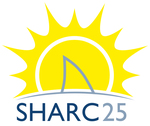26-27 May 2015, Kick-off meeting at ZSW in Stuttgart, Germany
02 June 2015, 1st Sharc25 press release
ZSW’s partners in this endeavor are
Hervorgehoben
the EMPA (Swiss Federal Laboratories for Materials Science and Technology), the universities of Luxembourg (LU), Rouen (F), Parma (I) and Aalto (FIN), the IMEC (Interuniversitair Micro-Elektronica Centrum VZW in B), the HZB (Helmholtz-Zentrum Berlin für Materialien und Energie in D), the International Iberian Nanotechnology Laboratory INL (P), Flisom AG (CH), and Manz CIGS Technology GmbH (D). The idea behind this EU project is to pool these eleven organizations‘ multidisciplinary skills in a bid to develop better cells.

A new opportunity for European cell manufacturers
Hervorgehoben
The performance of thin-film solar cells based on chalcopyrite has improved markedly in recent years. Able to achieve 20.4 percent efficiency, CIGS solar cells on plastic foil are almost on par with multicrystalline solar cells. CIGS cells on glass topped that mark for the first time in 2013 and increased their lead by 1.3 percentage points to 21.7 percent in 2014. These two world records were achieved by two partners of the Sharc25 project: EMPA holds the record for the foil substrate and ZSW for glass.

European Union’s Horizon 2020 research and innovation programme grant
Hervorgehoben
This project has received funding from the European Union’s Horizon 2020 research and innovation programme under grant agreement No 641004.

The goals of the European research project Sharc25
Hervorgehoben
European Sharc25 project aims to achieve 25 percent efficiency with thin-film solar cells

Researching CIGS thin-film solar cells
Hervorgehoben
Sharc25, an acronym for ’super high efficiency Cu(In, Ga)Se2 thin-film solar cells approaching 25%,‘ aims to raise the bar even higher. The five research institutes, four universities and two companies are pursuing three strategies to achieve this goal: Improve the absorber material, harness the power of new designs for more efficient surfaces and interfaces, and optimize light management to raise the efficiency threshold another few notches. An increase of about three percentage points to 25 percent efficiency would be quite the leap in performance.


